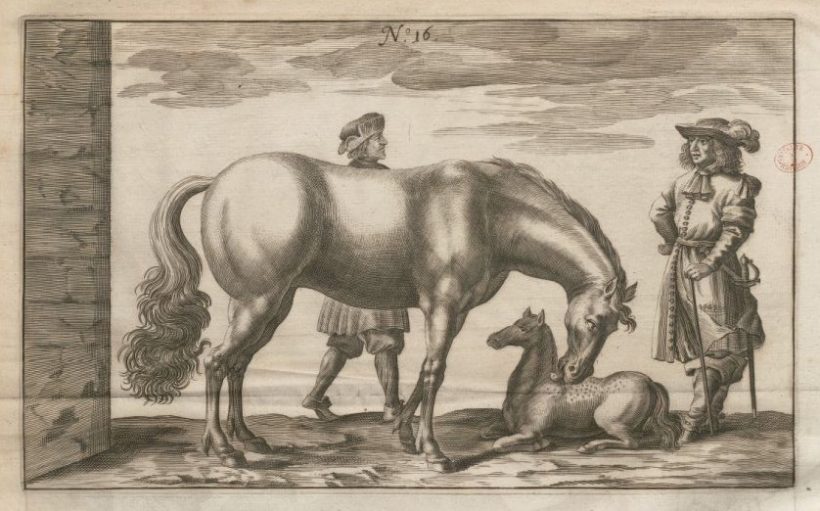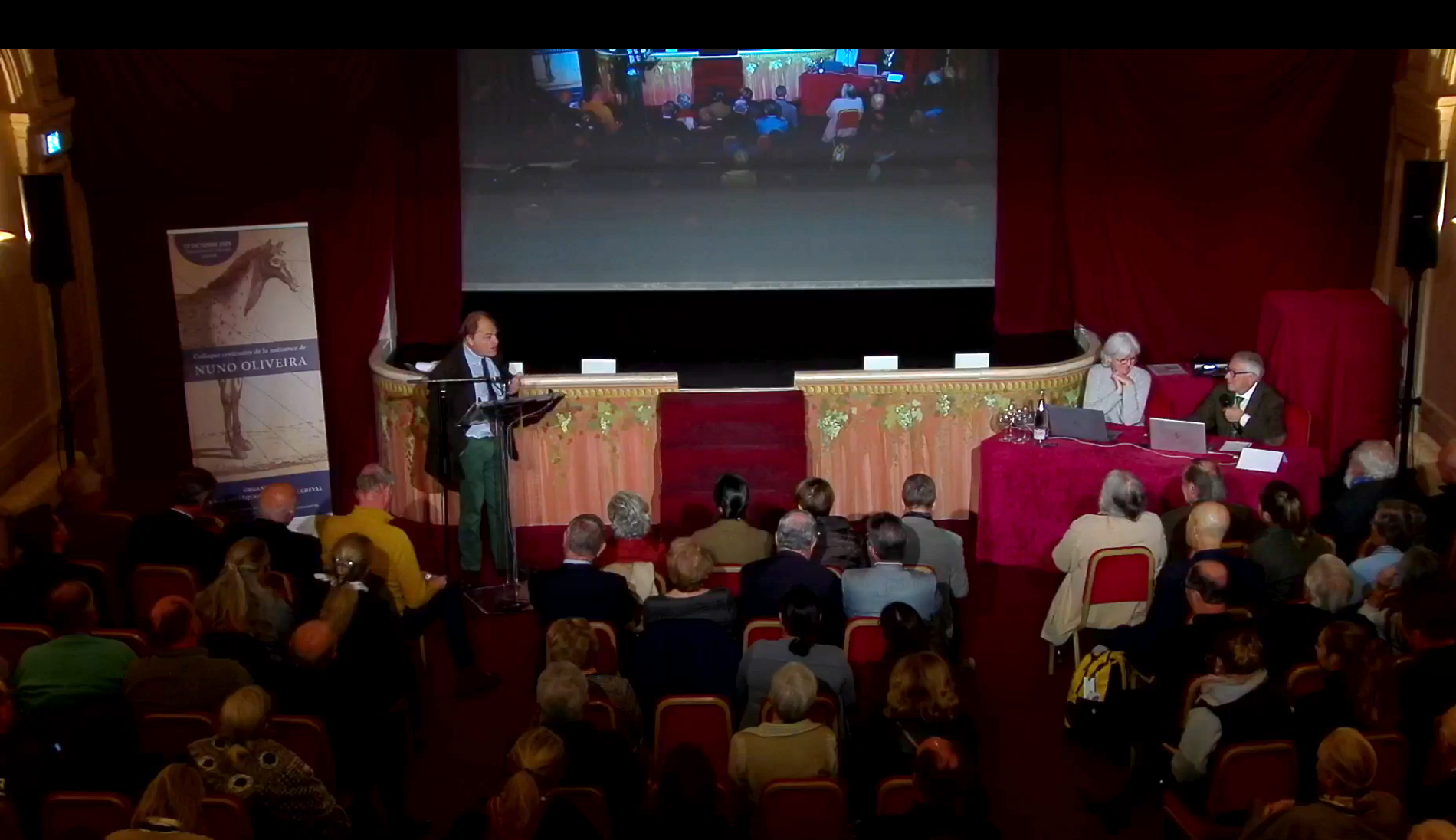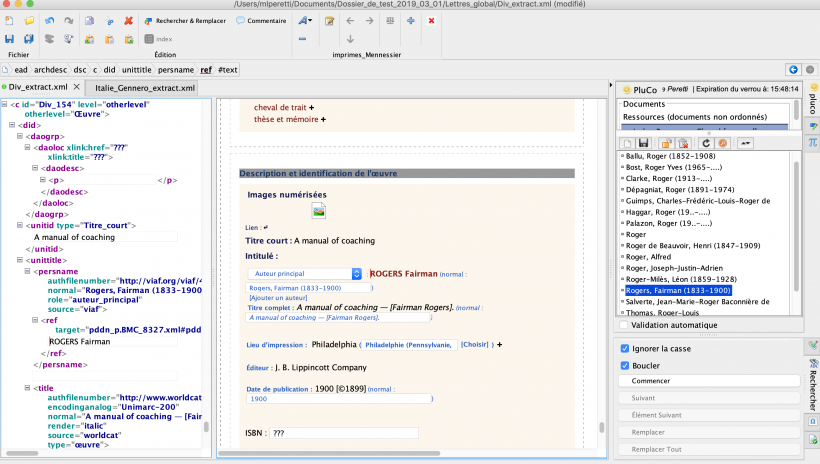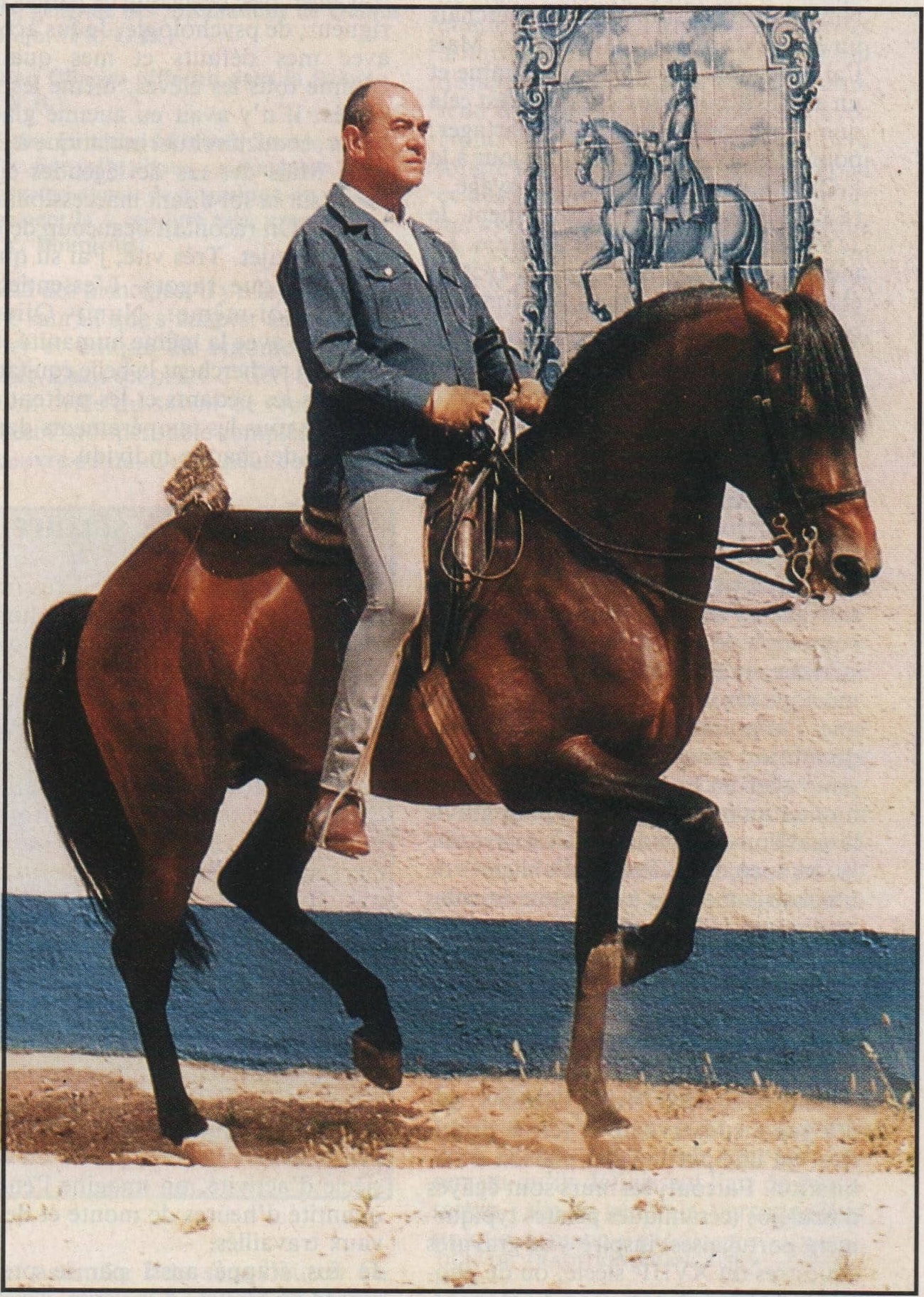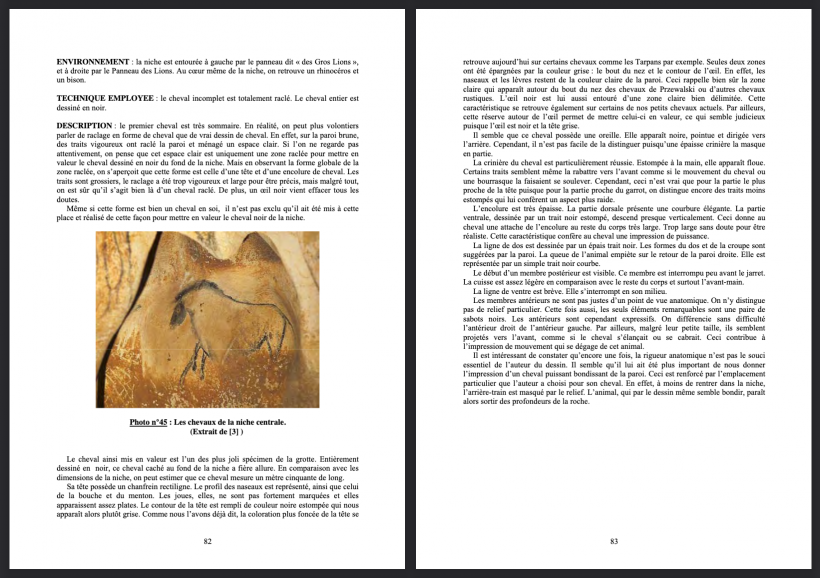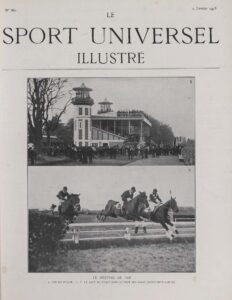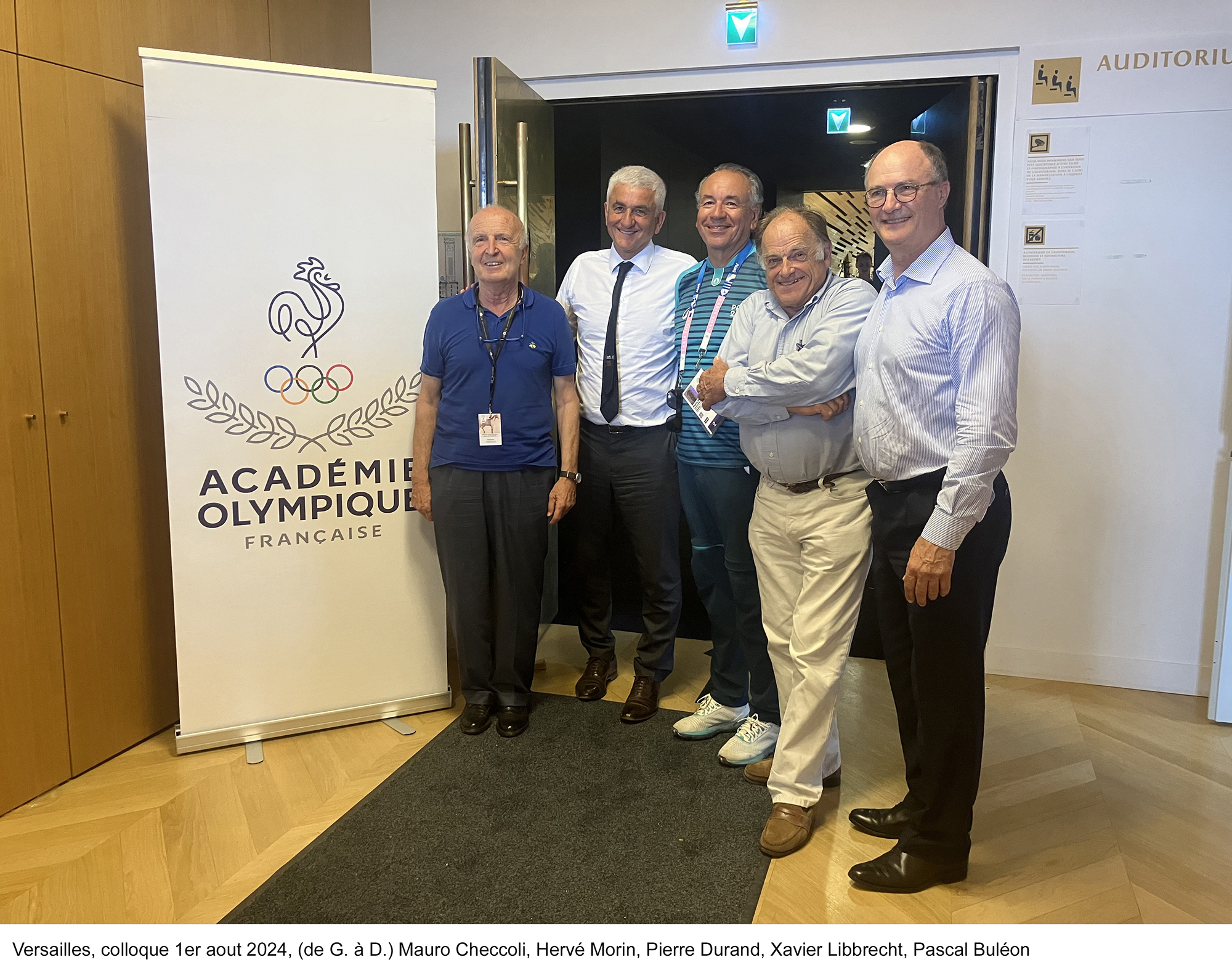
Equestrian sports: Games and stakes
The horse at the Château de Versailles from the 17th century to the Paris 2024 Olympic Games
Conference organised by the World Equestrian Library, August First, 2024, Château de Versailles .
Why this return of the conference organised by the World Equestrian Library and its partners, starting with the Mission Française pour la Culture Equestre, in the auditorium of the Château de Versailles on August First, right in the middle of the equestrian events of the Paris 2024 Olympic Games, which were in full swing at the end of the Park? That's because!
First of all, Versailles had been chosen to host the equestrian events of the Olympic Games, because it was surely the most emblematic and media-friendly place possible to talk about horses and riding.
It was also because Versailles is considered the cradle of traditional French equestrianism, and has been since the Château was built by King Louis XIV, who wanted to build a château that could be described as the “jewel in the crown”, with the ambition of defying the centuries to come in his own image.
Because of horses? The horse was an obvious necessity: at the time, it was used for war, hunting, parade and simply everyday life, but it was also the seal of distinction and authority. Versailles, its riding arenas, its Grandes Écuries, an equestrian theatre that has been alive and well since the 17th century (Bartabas' Académie équestre); a witness to the evolution of practices and knowledge right up to the explosive, sporting bouquet of the summer of 2024! Unforgettable.
Lastly, Versailles offers a unique opportunity to revisit the past and the ongoing development of equestrian practices to better understand the future, the future of the horse, man's travelling companion for over 3,000 years, and of equestrianism in the future, for his noble partner, but also for future generations.
An opportunity that FEI President Ingmar de Vos did not miss.
The conference, broadcast in full on the FFE website and ClipMy horse, began at 9.00am sharp. After words of welcome from Laurent Salomé, Director of the Musée National des Châteaux de Versailles et de Trianon and Christophe Leribault, President of the Établissement Public du Château, du Musée et du Domaine National de Versailles, followed by Pascal Buléon, Director of the MRSH Université de Caen and of the World Equestrian Library, the floor was given to the President of the Fédération Equestre Internationale (IEF), who was hard at work managing the equestrian events of the Olympic Games on site, three kilometres away, at the end of the Parc du Château. Ingmar de Vos was not content with a simple message of protocol, but took the opportunity to review the problems that threaten the horse world if it does not reform and adapt to the evolution of our societies. It was a solid speech , eagerly awaited, and one that will go down in history.
Having shared this vision of the future, the audience in the auditorium (around a hundred people) then got down to the nitty-gritty of the programme, namely a guided tour of the history of the creation of the Versailles estate under Louis XIII and Louis XIV by Karine Mc Grath, historian and head of the archives department at the Château de Versailles. Using a wealth of documents - including some never before published - she demonstrated that the horse was omnipresent at court throughout the Ancien Régime, as an auxiliary to royal hunting and gallant walks in the park, and as an attribute of power during ceremonial occasions. In addition to the majestic Grande and Petite Écuries du roi, masterpieces of Jules Hardouin-Mansart, the horse's mark was also seen in the artistic decor of the château's flats and gardens. The success of this alliance between horse and monarchy explains the persistence of the policies in subsequent eras, whatever the regime: the story of the eternal return of the horse, between the desire to refer to the glorious era and adapting to the contemporary world.
So it all began with Louis XIII's mad passion for hunting hounds in the forests west of Paris? Pierre-François Prioux, President of the Société de Vénerie, was the obvious choice. With unrivalled verve, he explained, in a few well-chosen slides, why hunting with hounds was a Royal pleasure at the time! And this is why Versailles!
Riding at Versailles from the 17th century to the present day: characteristics and developments
With the presentation by Guillaume Henry, editor emeritus and undisputed specialist in the evolution of equestrianism and the art of the Grand Masters, century after century, we left the forests and undergrowth to enter the more orderly, codified world of “equitation”!
In the 17th century, according to General L'Hotte , the École de Versailles marked the apogee of equitation. It symbolised excellence, and is now considered to be one of the finest examples of traditional French equitation. It was in this privileged setting that the almost definitive rules governing the equestrian art were established and then propagated. A host of equestrians strove for “perfection”: for the horse to rediscover, under saddle, the lightness and grace it naturally possessed. Guillaume Henry's speech was dense, rich and well-documented, and left no room for doubt: Versailles was indeed the crucible of so-called “traditional French” equitation.
It was then that Alain Francqueville , a former Cadre Noir equestrian and President of the Mission française pour la culture équestre (French mission for equestrian culture ), and I were able to understand how equestrianism was organised and regulated in order to move from an artistic and academic dimension in the 18th century to a sporting dimension in the late 19th and early 20th centuries.
In creating the modern Olympic project, Baron de Coubertin gave a place to equestrianism, and to dressage in particular. The formats and formulas for equestrian events evolved, not always in accordance with his wishes, towards their contemporary form involving, at a certain stage around 1930, the academic expertise of General Decarpentry , adapting to the reality of international competitions, which had become civilian and mixed, and developing the spirit and techniques, not without debate between tradition and progress, particularly in breeding.
Beyond the Olympics, horse-riding reached out to all publics, while the challenges of such development warned of the need to control its expansion.
The integration of equestrian sports into the Olympic programme paved with setbacks and frustrations for Pierre de Coubertin
After a pleasant lunch break where participants and speakers had time to chat over a buffet provided by Ducasse, the French National Olympic Academy (ANOF), which had offered its help in organising the conference, took over. Arthur Gallois, a doctoral student (Unil/Paris 1) in contemporary history and researcher with the French National Olympic and Sports Committee (CNOSF), opened the afternoon with a presentation entitled “Pierre de Coubertin et le grand manège olympique (1894-1924)”, shared with Arnaud Richard, President of the French National Olympic Academy (ANOF). Arthur Gallois demonstrated that the link between equestrian sports and Olympism was rooted in the personality of Baron Pierre de Coubertin (1863-1937), whose project was to train a modern knighthood, the “sportsmen”.
Already on the programme in Antiquity (chariot races), equestrian sports were included in the renovated Olympic Games in Athens in 1896. They were cancelled, however, as was rowing and sailing, because the required horses could not be brought to the Games or could not be found locally.
Contrary to popular belief, Coubertin's equestrian project was paved with failures and frustrations. In Paris in 1900, in Saint-Louis in 1904 and in London in 1908, horse-riding appeared to be a weak or non-existent link in the programme for logistical and financial reasons, but also for political and social reasons. The military, starting with a Swedish officer, Clarence von Rosen, “had the upper hand” and had no intention of letting “civilians” compete against cavalry officers. It was not until 1924, in Paris, that the latter, thanks to Major Georges Hector, who had apparently been made aware of Coubertin's arguments, worked on the regulations for equestrian events, allowing the latter to compete. This was a year before the Baron left his position within the Olympic movement, of which he had been the inspiration.
On behalf of Carine Duteil, with whom he had prepared the presentation, Arnaud Richard, University Professor of Language Sciences at the University of Toulon, went on to explain the links that had been forged between Coubertin and horse riding, solely through the Baron's writings. The development of the philosophy of horsemanship was not the least interesting.
This sequence was followed by a video projection on Blanche de Marcigny, the first French Olympic rider at the 1900 Paris Olympic Games or considered as such, thanks to a previously unseen documentary by Stéphane Gachet and Erwan Mellec (7 min).
In a similar vein, Marie-Laure Peretti, research engineer and head of La Bibliothèque Mondiale du Cheval (Université de Caen Normandie, MRSH, Pôle du document numérique), presented and commented on an astonishing set of photos featuring horses and riders at the 1924 Paris Olympics.
A progression through the presentations brought us to the heart of the conference, namely the situation of the horse and equestrian sports today. Sylvine Pickel-Chevallier, university professor and geographer at ESTHUA, University of Angers, backed up her statistics with confirmation of what we have all been witnessing for the past few decades: the feminisation of our world. Women are now competing on an equal footing with men in almost every discipline. It's been a long road! But how decisive for the future. Doesn't this mix in equestrian sport, which is unique in the Olympic Games programme, echo the contemporary challenges of a society in search of gender equality? While it may not yet be completely perfect - depending on the discipline (dressage, eventing, show jumping) - isn't this parity a good thing? Wouldn't it argue, if it were necessary, in favour of keeping equestrian sports on the programme of the Summer Olympics?
Where Pierre Durand goes beyond Jean-Pierre Digard's “body to body” to a noble “heart to heart”.
Equestrianism at the Olympic Games, between humanism and “animalism” was the title of the talk given by Jean-Pierre Digard , Emeritus Director of Research at the CNRS and member of the French Academy of Agriculture. It was a one-step presentation that showed just how unique horse riding and equestrian sports are - the only sports that have been practised with an animal since the beginning of time, from the chariot races of Ancient Greece onwards - and how much they are part of a culture that is - as it says – “hedonistic, baroque and sentimental”?
How their practice is undoubtedly a form of humanism, too! And Jean-Pierre Digard, at the end of a solid and uncompromising presentation, considered that, in order to ensure the future, “Vigilance is therefore essential, in the interests of both equestrianism and the Olympic Games”.
The testimony of Pierre Durand , Olympic champion in individual show jumping in Seoul in 1988 - and the only French rider able to speak about it - allowed us to feel that this sport was unique and singular; that it carries what we will call an extra soul, which goes beyond the “body to body” developed by Jean-Pierre Digard and which is of the order of “heart to heart”.
As a journalist and project manager for the World Equine Library, MRSH/University of Caen, yours truly attempted a conclusion . He expressed his concern about “an evolution that, for three thousand years, has followed the rhythm of the horse's stride (or gallop) on land and the wind in its sails on the sea, to that of the ion and the digital; of augmented human beings, artificial intelligence and so on”. He discussed the prospects for the arrival of e-sport in the Olympic movement and its possible consequences. He wondered about the future of the horse's effective (emotional?) companionship with man, which has lasted for over thirty centuries: “Is it not proof, for the human race, of its animality - well, of its animal part - of its buried nature?”After mentioning the horse's role in education, society and regional development, he went on to say that the horse was “the guarantor of the maintenance and upkeep of a suitable biotope, of landscapes that are pleasing to the eye”. Finally, he concluded on behalf of all those who love horses and equestrian sports: “For us, as for the IOC, the horse seems like an all-risk insurance policy, or better still, an investment... A life insurance policy!”
This conclusion was followed by closing speeches. Hervé Morin, President of the Normandy Region, which supports La Bibliothèque Mondiale du Cheval, explained that the development of the library was part of a wider policy, chosen and assumed by the Region in favour of the horse as a vector of activity, employment and regional development; that it was unique, unequalled and enviable.
Serge Lecomte , President of the French Equestrian Federation (FFE), spoke of the growing interest shown by the third largest sporting federation in the cultural and educational values of horses and riding.
Xavier Libbrecht
